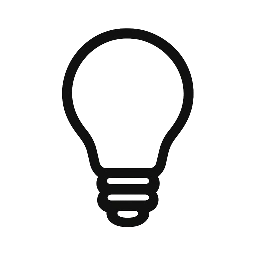Organizations that choose cloud migration programs stimulate ongoing changes within the cybersecurity domain. The cloud will integrate completely into business procedures by 2026 although it demands novel security management. The identification of these hazards remains vital for protecting important information along with operational security. The top five cloud security threats organizations need to recognize by 2026 are described below with some examples and mitigation processes.
1. Ransomware Attacks Targeting Cloud Infrastructure
The evolution of ransomware threats now focuses on cloud infrastructure because research shows that these attacks will escalate their aggressiveness by 2026. Cyber attackers use the growing vulnerabilities in cloud platform services to gain control over data through encryption then extort payments for data recovery.
Example: A major healthcare provider suffered a ransomware attack targeting the stored patient records located in the cloud early in 2025. Through an improperly configured cloud storage bucket, the attackers obtained entry while encrypting critical data and making a large demand for payment from their victims. The disruption caused by this incident threatened operations while simultaneously harming the reputation of the provider under regulatory attention.
Mitigation: The mitigation process includes enabling strong access controls in addition to scheduled security configuration updates and scheduled audits used to detect potential security gaps. The combination of consistent backups with modern threat management tools serves to lower the risk ransomware attacks cause to organizations.
2. Misconfigured Cloud Settings
Cloud settings misconfiguration continues to pose a major threat to organizations in this year 2025. The use of sophisticated cloud architectural designs results in a higher probability that employees will make errors which creates vulnerabilities in stored data and exposed network services.
Example:One financial company exposed its cloud database when wrong settings led to public visibility of its systems by mistake. The company’s oversight mistake exposed sensitive financial data to unapproved users who performed a data breach attack on thousands of customers.
Mitigation: Organizations must use automated tools to both monitor and enforce best practices for cloud configurations since they serve as protection against misconfigurations. The protection of cloud systems from human errors requires establishment of a training program for IT personnel dedicated to cloud security fundamentals.
3. Supply Chain Attacks on Cloud Service Providers
The growing prominence of supply chain attacks during recent times indicates they will become major threats to cloud security by 2026. Cloud attackers specifically seek to exploit third-party vendors which provide services to their client base thus obtaining access to client cloud networks.
Example:One of the leading cloud service providers fell victim to a supply chain attack affecting its software update infrastructure in 2025. As a result, many organizations unknowingly installed malicious updates which led their customers to compromise their data security in major industries throughout the world.
Mitigation:Organizations need to perform detailed investigation in their search for cloud service providers who maintain strict security criteria throughout their operations. Additional security measures such as multi-factor authentication and abnormal activity alerts serve to spot potential external security threats in the supply chain.
4. Insider Threats
Neither intentional nor unintentional acts by insiders remain a substantial risk factor within cloud environments. Staff members who handle sensitive information have the potential to reveal those data accidentally while they also might steal it to benefit themselves.
Example:A Technician from a Tech Company misused their authorized cloud system access to steal confidential business code for distribution to an industrial rival. The event produced financial detriment along with harm to the company’s public image.
Mitigation: Organizations need to implement system controls that limit personnel access to information they need for their work responsibilities. The identification and reduction of insider threats becomes successful through both security training for users and continuous monitoring of their system actions.
5. Data Breaches Due to Inadequate Encryption
The growing restrictions on data privacy strengthen the requirement for advanced encryption practice within cloud environments. Blank encryption measures across 2026 will produce substantial data breaches while also triggering enforcement violations.
Example: A retail company compromised customer payment data storage within the cloud system because they lacked encryption measures. Privacy breaches occurred when hackers accessed the cloud environment due to which sensitive data extraction led to major regulatory fines and data breach incidents.
Mitigation: Organizations should establish data encryption as their top priority both when data remains dormant and during transfer procedures. End-to-end encryption methods and scheduled encryption protocol analyses serve as protection against unauthorized access to sensitive information.
Conclusion
Cloud security risks need immediate attention during our progress into 2026 for organizations that use cloud technologies. Businesses ought to implement proactive security measures that fight ransomware threats together with misconfiguration vulnerabilities while stopping both supply chain-based attacks with insider dangers and ensuring proper encryption safeguards to protect customer trust in their data security. The key to coping with the changing cloud security environment lies in implementing strong protective measures with permanent surveillance alongside staff education programs.
Discover more from Tech Trend Insights
Subscribe to get the latest posts sent to your email.
